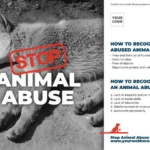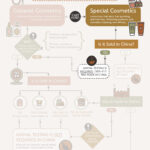Animal cruelty, an insidious aberration in human behavior, encompasses a wide spectrum of actions that inflict unnecessary suffering on animals. While many are familiar with the overt acts—such as beating, neglecting, or abandoning animals—there exists a profound depth to this issue, meriting exploration beyond the surface. Understanding what defines animal cruelty requires dissecting societal norms, examining personal ethics, and grappling with the complex relationship between humans and animals.
At its core, animal cruelty can be delineated into two broad categories: active and passive cruelty. Active cruelty refers to direct actions taken to harm an animal, whether through intentional physical abuse, psychological torment, or exploitative practices like dog fighting or using animals for dangerous sports. Passive cruelty, on the other hand, may present as neglect—an insidious form that can often go unnoticed longer. This includes failing to provide basic needs—food, shelter, medical care—and exposing animals to dangerous conditions.
Nonetheless, the delineation becomes murkier when we venture into the gray areas of animal treatment. Does using an animal for entertainment constitute cruelty, even if the animal appears unharmed? Is it cruel to keep an exotic animal in captivity, despite assurances of its well-being? These questions evoke the ethical dilemma surrounding the use of animals in circuses, aquariums, and zoos, where the line between care and exploitation can blur. A progressive paradigm shift in societal values prompts examination of such practices through a more critical lens.
To grasp the concept of animal cruelty, one must also consider the role of legislation. Varying laws across jurisdictions affect the interpretation of what constitutes cruelty. In some regions, merely failing to provide adequate food may be punishable, while others may require demonstrable harm to support an allegation of abuse. This inconsistency contributes to confusion among the public and leads many to underestimate the severity of actions that can be classified as cruel.
Furthermore, cultural perceptions play a pivotal role in shaping attitudes toward animal treatment. Societies around the world often have differing views on what constitutes acceptable behavior towards animals. In certain cultures, practices deeply entwined with tradition—such as hunting or using animals for labor—are viewed as honorable, while others may deem them as antiquated and cruel. This dichotomy fosters an ongoing discourse about the evolving relationship between humans and the animal kingdom. Each conversation beckons us to reconsider our long-held beliefs and recognize that cruelty can be not only an act but also an ingrained societal norm.
So, how does one identify the crossing of this critical threshold into cruelty? The answer is not straightforward. A complex interplay of intent, action, and the impact on the animal must be assessed. The key lies in empathy and awareness: observing an animal’s behavior and condition can often reveal the unseen layers of suffering. Signs of distress, such as excessive barking, cowering, or repeated escape attempts, may indicate an adverse environment—meriting a closer examination of the situation.
Additionally, a fundamental element is understanding the individual needs and natural behaviors of specific species. Dogs, for example, are social animals requiring companionship, exercise, and mental stimulation. Keeping a dog confined in isolation for extended periods can lead to emotional and psychological damage, a subtle form of cruelty that may not provoke immediate outrage yet deserves scrutiny. In contrast, an indoor cat might thrive in a controlled environment but requires opportunities for play and exploration to ward off behavioral issues.
The realm of animal experimentation further complicates the discourse. Despite regulations intended to minimize pain and suffering, the utilization of animals for scientific research remains a contentious subject. Advocates for animal rights question the morality of subjecting sentient beings to potential harm, arguing that cruelty extends beyond the physical dimension to ethical implications as well. The debate surrounding humane research practices underscores the necessity for transparency and continued dialogue within the scientific community and the public at large.
As we navigate our understanding of animal cruelty, it becomes evident that fostering compassion and empathy holds the key to shifting perspectives. Educating oneself about the behaviors and needs of various species cultivates a base of knowledge from which to challenge ingrained injustices. A shift towards acknowledging and addressing the more subtle forms of cruelty—negligence, exploitation, and the cultural underpinnings of animal use—encourages a robust examination of ethical treatment and enhances advocacy for those who cannot speak for themselves.
In conclusion, recognizing when animal treatment crosses the line into cruelty necessitates a reflective and multifaceted approach. Engaging with the topic requires not only a keen awareness of actions that result in harm but also an appreciation for the broader ethical implications tied to our interactions with animals. By sustaining a dialogue that transcends superficial perceptions, one can more effectively advocate for a future wherein all creatures, great or small, are afforded the sanctity and respect they inherently deserve. Ultimately, a society that embraces compassion toward animals is one rich with empathy, reflective of our humanity’s highest ideals.









